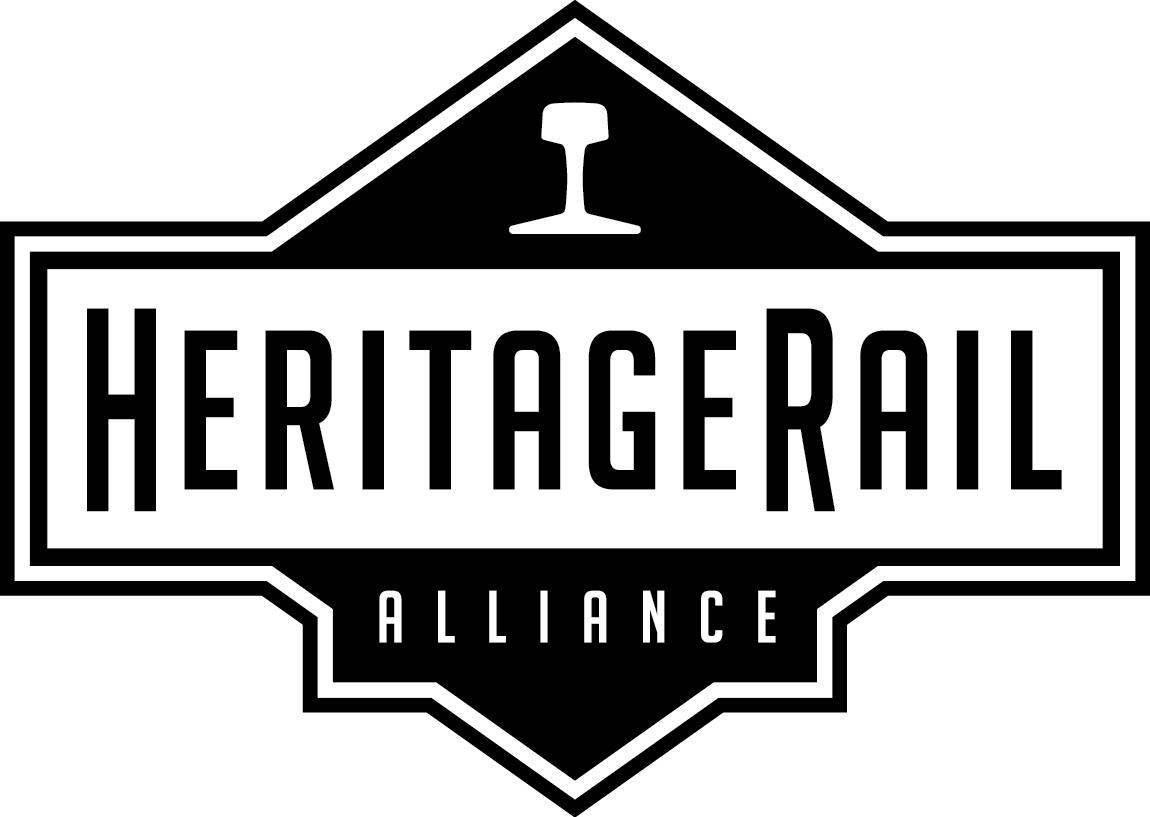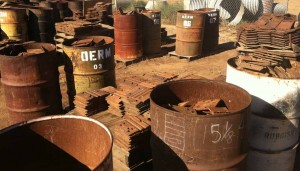
By Tom Baker, Orange Empire Railway Museum
Reprinted with permission from the OERM Gazette.
Late in 2013, Danny Giles initiated a project to organize the tie plate inventory. A little back ground: historically, as the museum acquired sidings, much of the material would be loaded into barrels to make it easy to transport. As the material arrived at the museum, it would be placed out back with the intention to sort it later. As might be expected, little of that sorting took place and the material tended to get further fouled as people went looking for material for various projects. Consequently we ended up with many barrels (and pallets) of mixed tie plates, with little knowledge as to what we had.
Program Manager Danny, with help from Tom Baker, Jim Baker, Mahlon Dupree, Polly Griffith, Dave Ley and Mike Donnelly spent the next 12 months sorting the plates according to size and punching. Early in the project it was realized that pallets were best for most plates but that the pallets tend not to stand up to the weather and weight. Many days were spent either beefing up existing pallets or constructing new heavy pallets from on-hand material.
As the project progressed, Phil Palmieri discovered, on-line, some old catalogs that described plates then for sale. We determined that we have some of these plates in our inventory. Phil and Tom then started a search of the Internet for patent information and historical advertisements. So far 16 patents have been found that appear to cover our inventory.
One interesting anomaly uncovered was related to 6 inch wide plates; most plates are around 8 inches wide. Apparently during World War II, the government installed a number of railroads at military bases such as the Naval Air Weapons Station China Lake and Norton Air Force Base using 6 inch plates (material went further and they didn’t care if the railroad lasted too long). As we do not believe we will be putting these plates into service soon, we counted them back into good barrels and numbered the barrels. So far we have around 30 barrels of around 200 each. During this activity we discovered approximately 20 different designs mostly related to the bottom of the plate (the part that touches the tie). Some have horizontal cleats, some vertical, some flat, some a waffle pattern. We have what we call a fish skeleton, we have some with staggered protrudences and others hard to describe. It might make an interesting display.
As part of the effort, Tom built a prototype database of the plates in Filemaker Pro. This carries pictures of both sides of the plate as well as dimensions, punching sizes, quantity, location, comments and other fields. At the moment we use a printed copy in the field to assist with further sorting and have been exploring how to distribute or use the data going forward.

